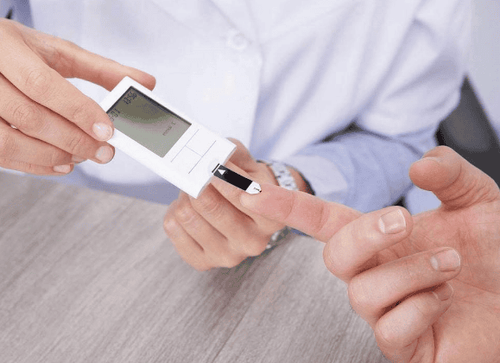This is an automatically translated article.
Diabetes can damage the peripheral nerves. Therefore, the majority of patients with diabetes will have concomitant peripheral neuropathy. If not diagnosed and treated early, the patient will face dangerous complications.
1. The relationship between peripheral neuropathy and diabetes
There are four types of neuropathy associated with diabetes:
Peripheral neuropathy Autonomic neuropathy Cranial neuropathy Focal neuropathy In which, the majority of diabetic patients have peripheral neuropathy. Diabetics with high blood sugar can lead to nerve damage and development of peripheral neuropathy. Peripheral neuropathy usually occurs in the legs or arms leading to numbness, loss of sensation, and sometimes pain. It is also the most common complication of diabetes.
About 60% to 70% of people with diabetes will develop peripheral neuropathy. However, this nerve damage is inevitable. Studies have shown that people with diabetes can reduce their risk of developing nerve damage by keeping blood sugar levels as close to normal as possible.

Bệnh tiểu đường là một nguyên nhân gây thần kinh ngoại biên
Chronic high blood sugar causes nerve damage not only in the extremities but also in other parts of the body. These damaged nerves cannot carry messages effectively between the brain and other parts of the body.
This means that the person may not feel heat, cold, or pain in the feet or hands. In case, the patient has a foot injury, the patient will not feel the wound. The consequences can be life-threatening from infection.
However, there are many treatments available to prevent symptoms and minimize complications. Early diagnosis and treatment will help prevent those symptoms.
2. Symptoms of nerve damage from diabetes
Numbness is the most common and worrisome symptom of nerve damage from diabetes. Loss of sensation is also a common symptom. People with loss of sensation are more prone to foot ulcers, even requiring amputation. In addition, the patient also has the following symptoms:
Numbness Itching Needles stinging Ants Cramps Itching

Tê là triệu chứng phổ biến nhất của tổn thương thần kinh do bệnh tiểu đường
These symptoms will appear more often at night. At the same time, the above symptoms will make the patient difficult in daily activities, movement:
The patient may feel increased sensitivity to touch or tingling, numbness in the toes, table feet, hands. Muscle weakness: Elevated blood sugar can damage the nerves to the muscles. This can lead to muscle weakness. The patient will have difficulty walking, standing, and having difficulty picking up or carrying things. To understand more about the disease or need to be examined and consulted when you notice the symptoms of the disease appear, you need to see a team of specialists for advice and early treatment.
If you have a need for consultation and examination at the Hospitals of the National Health System, please book an appointment on the website for service.
Source: webmd.com
Please dial HOTLINE for more information or register for an appointment HERE. Download MyVinmec app to make appointments faster and to manage your bookings easily.













